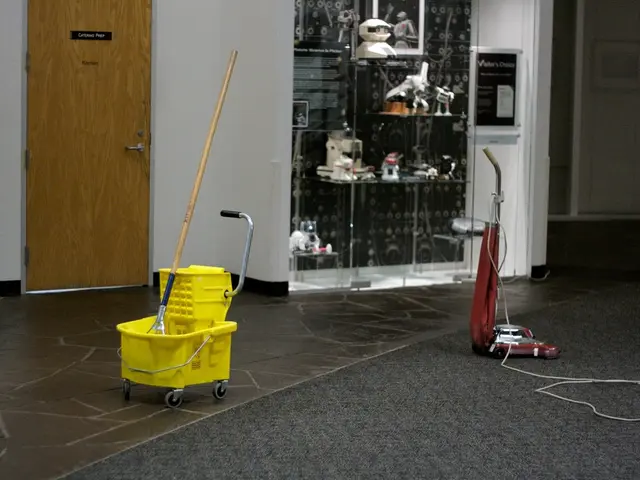The inner workings of a mechanical clock: an explanation.
A mechanical clock is more than just a mechanical wonder; it's a testament to human ingenuity, a time-keeping apparatus that has managed to maintain its elegance and precision for more than a century. Only a handful of machines can boast such enduring functionality.
This antique contraption is still ticking exactly as it did the day it was crafted, and it's not just because of good luck. Mechanical clocks have a special charm that never fades, and it all starts with their ingenious design.
A Real-Life Tale
In a tale as old as time, let me regale you with a story that warms the cockles of any clock enthusiast's heart. A few years ago, a young lass came to visit my humble abode. She happened to take an interest in my prized collection of mechanical clocks, and I, being an old softie, was more than eager to share my knowledge with her.
At one point, she inquired about the inner workings of these fascinating time-keepers. I, with a spring in my step, picked up an antique clock movement and proceeded to explain the magic that makes these marvels tick. The bewildered expression on her face was priceless when she asked, "Where do the batteries go?"
Unraveling the Mystery
But let's dive deeper and find out how these awe-inspiring devices work their trickery. A closer look at the intricate symphony of mechanisms within mechanical clocks will help us understand their enchanting precision and grace.
For the sake of simplicity, let's focus on the Five elements that bring this centuries-old wonder to life. They are Power, Gears, Escapement, Regulator, and Indicator. Let's dissect each one.
Power
The power source for these relics is as simple as it gets – you, dear human. When you wind up your clumbsy old mucker, you transfer energy from your fingers to the spring or weight. Once the carefully wound spring or the weight Hoist to its highest point provides the necessary motive force or releases energy through the gears, allowing the clock to run for a predetermined amount of time. Without a steady energy supply, this mechanical masterpiece won't tick and tock, and it'll come to a grinding halt.
Gears (or Wheels)
Gears, also known as wheels, with their little pointy teeth, work in tandem like a well-oiled machine. Each small cog meshes with the next via pinions, transferring energy from one wheel to the next. As energy flows through the train, subsequent wheels turn faster and faster. The time gear train, for example, by way of a series of wheels leads to the fast-spinning escape wheel. However, this incoming energy needs to be controlled.
Escapement (or Controlled Release Mechanism)
The escape wheel, the last wheel in the train, is the traffic cop for the energy flow. It's been designed to release the stored energy from the mainspring or weight in a controlled fashion. This dance of the verge catching and releasing the teeth of the escape wheel is the mellifluous tick-tock sound you hear when you're near a mechanical clock. These ticks and tocks transmit an impulse to the mighty pendulum to keep it swaying steady.
Similarly, the mainspring releases the energy through the gears on the strike side of a clock by means of a series of levers and pins.
Regulator (or Speed Controller)
The regulator, a pendulum in most cases, maintains a steady pace for the clock. Generally, a longer pendulum will oscillate more slowly while a shorter one will swing more swiftly. Regulating or adjusting the length of the pendulum will either slow or speed up the clock.
Clocks without a pendulum utilize a lever escapement, a floating balance, and a balance wheel, which rely on a coiled spring and are regulated by means of an adjustment dial or lever on the escapement arbor.
Indicator (or Time Display)
The indicator, those little hands on the face of the clock, shows the time. It doesn't matter if the clock is massive or petite, elaborate or simple, it does one thing – it tells the time. But these handy dandies have a little trick up their sleeves, as they also point to the clock's sonorous note at certain predetermined points in the hour, whether it's a quarterly, half-hour, or the hour on a bell(s) or chiming rod(s).
Synergy (or Teamwork)
These five elements come together to form a beautiful harmony. The controlled harnessing of energy is a masterclass in engineering design, ensuring that the clock performs its one and only purpose, telling the time. And that's why my son's young friend still pondered over where the batteries go.
Dive Deeper into the World of Antique Clocks
Quench your insatiable thirst for knowledge and subscribe to our newsletter to get the latest updates delivered straight to your inbox. Don't miss a beat!
Share the Time Photo
Connect with us on Social Media
Facebook - Twitter - Instagram
Related
The Inner Workings of Mechanical Clocks: How They Keep Time
Inside the Ticking Heart of a Mechanical Clock
The Mechanical Clock: A Timeless Classic
In my collection, vintage and antique clocks stand alongside modern gadgets and technology, each telling a unique story of innovation and human ingenuity. The lass, intrigued by my clock collection, once asked me where the batteries went for these old-fashioned wall clocks. After explaining the inner workings of mechanical clocks, it became clear she couldn't have been more mistaken about their power source. These wonders of engineering are driven by a simple yet steadfast source - human energy, not batteries.








